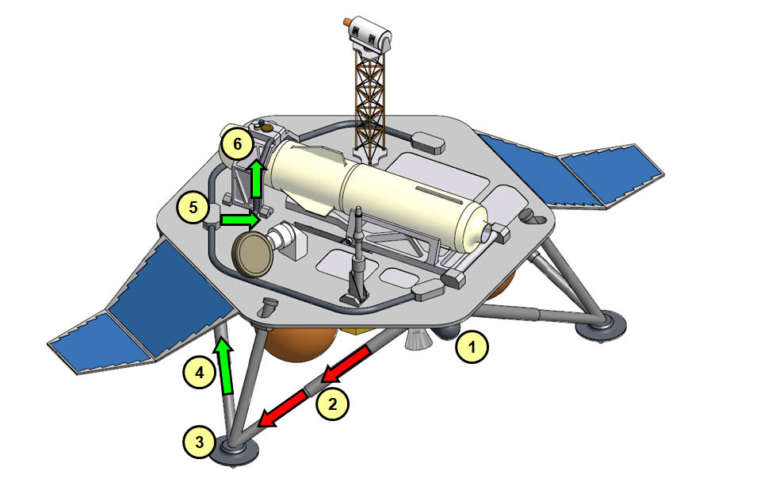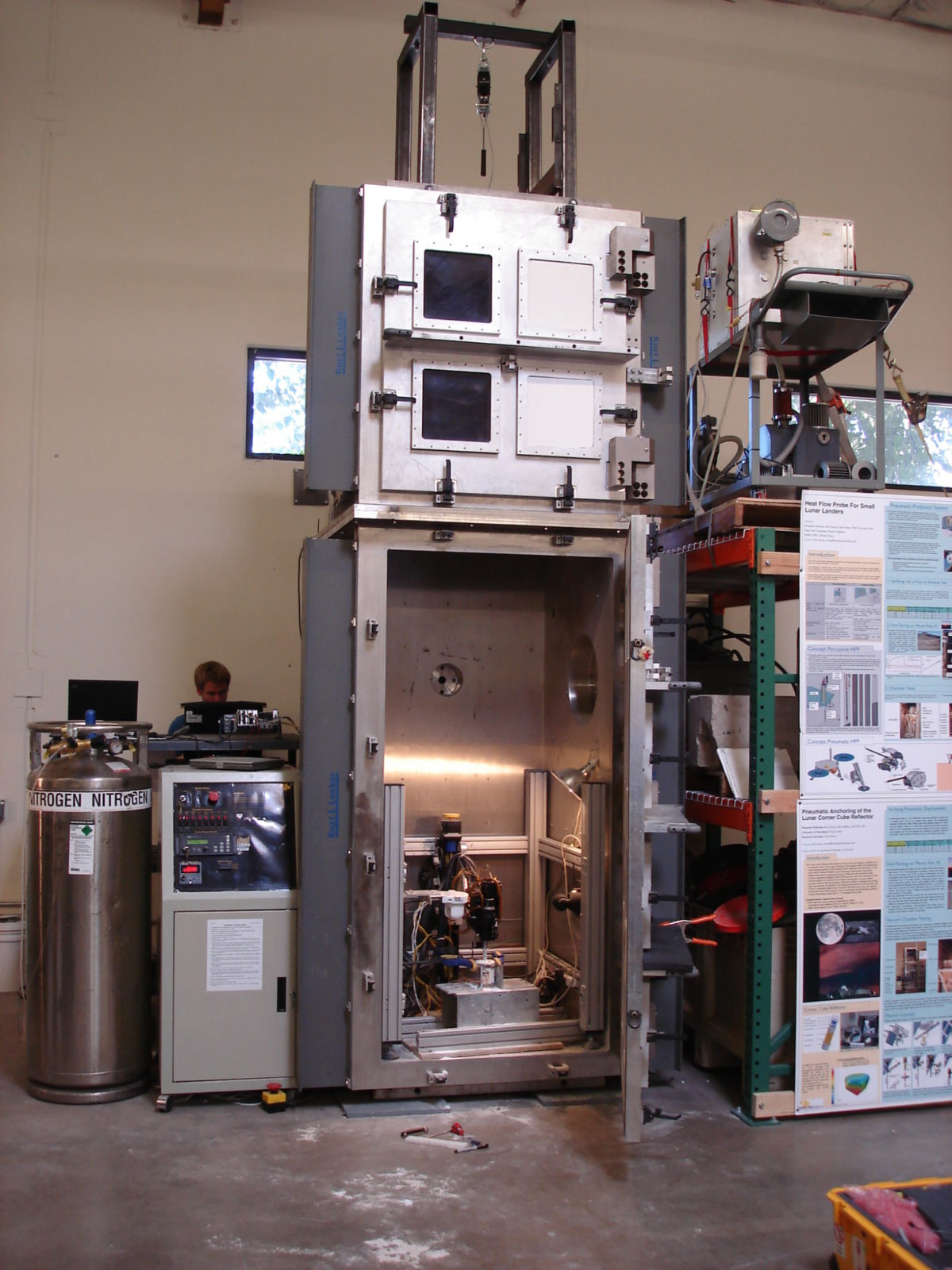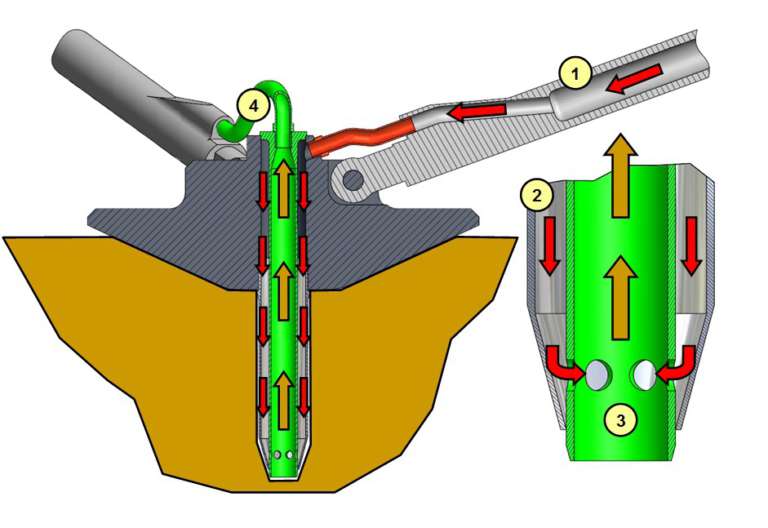Bruce Betts • Oct 30, 2012
PlanetVac: Sucking Up Planetary Regolith
I am excited to introduce to you the latest Planetary Society project: PlanetVac (Planetary Vacuum), a project with Honeybee Robotics. PlanetVac is new technique to sample planetary regolith (the upper surface materials that overlie bedrock). It has the potential to be comparatively low-cost and very reliable due in part to a lack of moving parts. It can be used on Mars, the Moon, or asteroids. It could facilitate a rapid and reliable way to either get samples into in situ instruments on the spacecraft, or into a sample return capsule.
PlanetVac uses a puff of pressurized gas to push regolith into a sample container (effectively acting like a planetary vacuum cleaner). Because of the low pressures on Mars, the Moon, and asteroids, the technique is extremely efficient because the efficiency is related to the ratio of the pressure of the gas you are using to the ambient pressure. Landers typically have high pressure Helium already on board, used to pressurize the fuel tanks, which could be used as the gas.

The next crucial step with PlanetVac is to take it from theory and piece meal tests to a full up test in Honeybee’s 3.4 meter (11 foot) vacuum chamber. If we can experimentally demonstrate the technique is effective, then it has the potential to move to higher levels of development and to become another arrow in the quiver of tools available to sample planetary surfaces.

To learn more about PlanetVac, you can read the write-up below from the project principal investigator, Kris Zacny, the Director of the Exploration Technology Group of Honeybee Robotics; or listen to Kris on Planetary Radio; or check out the video of Kris and me at Honeybee’s cool Pasadena facility last week talking about PlanetVac. The video, shot by Mat Kaplan, is below. In the near future, we’ll also have a video or two up about the other things Honeybee has been and is involved with. I’ll link them here when they are available. Honeybee built the rock abrasion tools (RAT) for the Mars Exploration Rovers, the scoop for the Phoenix lander, and the brush and portions of the sampling system for MSL Curiosity. They are world leaders is sample manipulation on planetary surfaces.
Please consider supporting the PlanetVac project.
The Planetary Society is seeking $30,000 to support the activities at Honeybee Robotics on PlanetVac prototype development and testing. You can contribute here.
What is the PlanetVac project, from Kris Zacny:
We will design and build a prototype planetary lander with the pneumatic sample acquisition system - PlanetVac. This revolutionary sampling approach relies on acquisition of planetary regolith into hollow sample tubes placed underneath the lander footpads. A puff of gas directed at the tube's rim and up the tube can effectively move acquired plug of regolith through the connecting hose and into a sample return container or analytical instrument for in-situ analysis. PlanetVac has no moving parts and in turn is very robust. Redundancy is provided by integrating sampling tubes below each lander foot pad. Initial tests conducted in reduced gravity flights and in vacuum chambers demonstrated unprecedented efficiency: with just 1 gram of gas up to 6000 grams of soil was lofted at high velocities. This end to end sample acquisition and transfer system solves one of the most difficult problems in planetary exploration: sampling and transferring of a sample to an instrument.

Once designed and built, the prototype PlanetVac will be placed inside our 3.5 m vacuum chamber for drop testing under Mars and Lunar/Asteroid vacuum conditions. The lander will be dropped onto a bed of Mars Mojave Simulant (MMS) and also onto a bed of JSC-1a Lunar soil simulant. Upon 'landing', a gas valve will direct pressurized gas into sampling tubes, by then already filled with the regolith. The regolith will then be seen moving through the clear tubing into a sample return container placed within the earth return vehicle (e.g. rocket nose cone). The basic operational principles have been established and tested. However, to this day, no one has been able to put all the pieces together and perform end to end test under analog conditions. This will be the first!
Once proven, this approach would open up a new window to planetary exploration. PlanetVac could be used as a touch and go sampler for asteroid exploration, a hopper on the Moon - acquiring multiple samples every time it hops, or on Mars to acquire samples.
The Time is Now.
As a Planetary Defender, you’re part of our mission to decrease the risk of Earth being hit by an asteroid or comet.
Donate Today

 Explore Worlds
Explore Worlds Find Life
Find Life Defend Earth
Defend Earth


